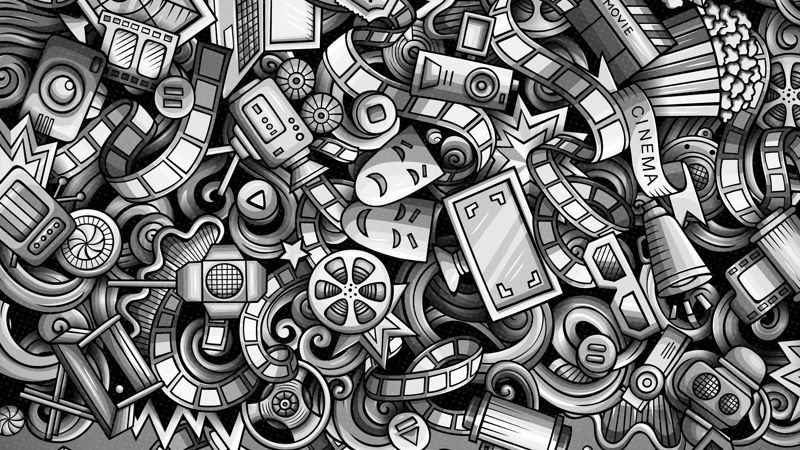What can brands learn from Glastonbury?
Martin Bui, Experience Design Director at Tribal Worldwide, explores how Glastonbury's approach to fan experience hits the right note and can be an inspiration for brands.
I lived in an era when experiencing a live concert meant camping out for days at the nearest record store in order to be first in line for a ticket.
Through rainstorms and blistering heat, this was how it was done. And, trust me, I did it numerous times back then so I could see some of my favourite bands like The Smiths, New Order and The Cure.
When I went to these shows, it meant going to the show, and that was that.
My expectation of those concerts usually came from exaggerated stories told from obsessed die-hard fans, reading exultant newsletters from teenager fan club members, or watching a two-second re-run clip from MTV news. Eventually, when I went to these shows, it meant going to the show, and that was that. Don’t get me wrong, I enjoyed every bit of it, but I didn’t remember much except certain moments, like fans rushing up to the stage (Morrissey in Dallas 1991). However, afterwards I always felt a bit cheated and disconnected because there should have been more.

Above: Queuing in the rain was a rite of passage for any self-respecting music fan.
Fast-forward 30+ years; Glastonbury reopened this year as one of the most iconic contemporary art festivals in the world, with attendance of 210K festival-goers. This year’s line-up included some of the music industry’s best performers; Sir Paul McCartney, Billie Eilish and Kendrick Lamar among them. But, besides the top acts, the festival showcased two other headliners; Total Experience and Immersive Technology.
Understanding and recognising that all touchpoints are unique, and then creating exceptional customer interactions that integrate with the wider brand ecosystem, is essential.
Throughout the years Glastonbury, and a few brands, continue to innovate creatively and socially by using technology not only to better engage with its audience but to connect their experience before, during, and after the festival. For brands, understanding and recognising that all touchpoints are unique, and then creating exceptional customer interactions that integrate with the wider brand ecosystem, is essential.
This year, EE has announced the return of its Glastonbury app to help keep festivalgoers on track with features like an interactive map and user curated content. They also set up free recharge tents for smartphone users and complimentary wi-fi which offer reminders of Pyramid stage performances. This is the total experience which tapped into the festivalgoers’ needs at meaningful moments.

Above: EE's Glastonbury app helped attendees keep track of where they were and what was on.
According to a Nielsen report, 51% of consumers favour brands that sponsor a concert or festival and, additionally, Momentum Worldwide reported that 65% of live event attendees recommend a product from a branded event, with 59% purchasing that product at a retail location after returning home. That doesn’t even include those watching and engaging with the festival from home through hybrid events (a merger of in-person and virtual experience).
It goes to show how event planners can wield metaverse technology to create unique experiences for viewers at home.
At this year’s Coachella festival, people watching the YouTube livestream of Flume’s set saw enormous parrots slowly rising above the stage. Of course, nobody at the festival could see this, but it goes to show how event planners can wield metaverse technology to create unique experiences for viewers at home. For a post-pandemic world, this is a winning situation for both festival planners and people who are not confident returning to large, crowded events.
Many of the metaverse builders think that live events such as Glastonbury and Coachella will be increasingly hybrid for both digital and real-world components, with immersive tools helping make each event distinctive and desirable. “It doesn’t make sense just to recreate the live music experience virtually,” said Sam Schoonover, the innovation lead for Coachella. “Instead, you should give fans something new and different that they can’t do in real life.”

Above: Virtual reality can help some brands connect with attendees and also help festivalgoers understand new initiatives.
Virtual and immersive events allow retailers and brands to push boundaries and meet their customers in different and more engaging formats. For example, in the past, Greenpeace offered Glastonbury attendees a glimpse of travelling to the Amazon while on the festival grounds. Inside the immersive VR experience, the journey took them deep into the Amazon with a story of a tribe whose land had been destroyed by a dam.
But these immersive experiences don’t have to be contained to just entertainment or brand initiatives, they can be used for the greater good too, helping festivalgoers in need of mental health or well-being, for example, with quick access to medical professionals and virtual clinics.
The potential opportunities for brands and customers to totally immerse themselves in the festival experience is almost unimaginable.
Looking back, my concert and festival journey and the associated brand relationships, were very disconnected. Of course, we didn’t have the technology or learnings on the importance of the end-to-end user experience at the time. But, in 2022, the potential opportunities for brands and customers to totally immerse themselves in the festival experience is almost unimaginable. And it would make for a great metaverse experience too!
)




 + membership
+ membership








